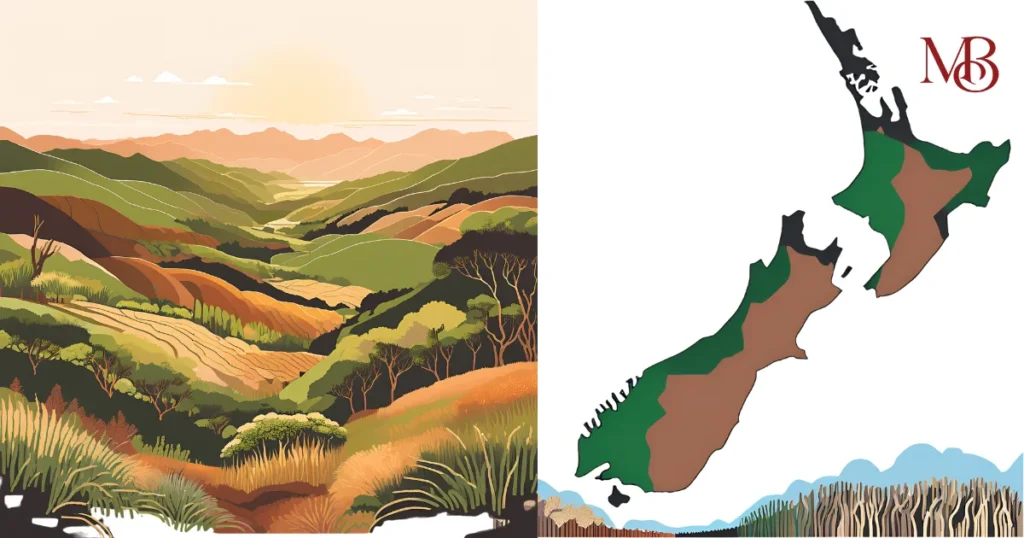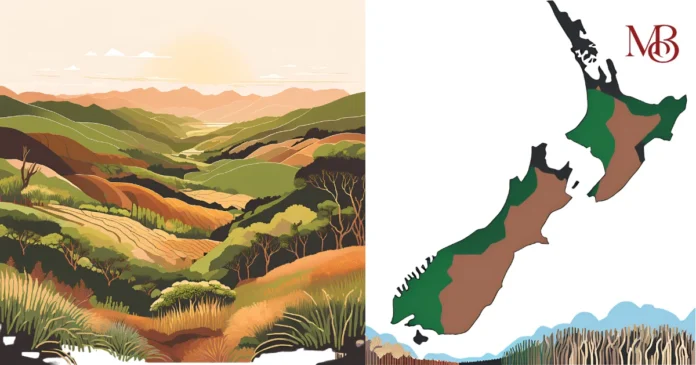New Zealand’s soils are an incredible natural resource, showcasing a diversity and fertility that support the country’s rich ecosystems and vibrant agricultural industry. The unique characteristics of these soils arise from New Zealand’s diverse climate, volcanic activity, and geological history. In this blog, we’ll delve into what makes New Zealand’s soils so fascinating, exploring their types, significance, and the innovative management practices that keep them healthy.

1. A Diverse Range of Soil Types
One of the most fascinating aspects of New Zealand’s soils is the sheer variety found within a relatively small landmass. The country boasts several major soil orders, including Allophanic, Brown, Pallic, Pumice, and Gley soils. Each type has distinct properties that influence how it can be used for agriculture, forestry, and conservation.
- Allophanic Soils: These soils are rich in volcanic ash and are characterized by their high capacity to retain nutrients and water. They are primarily found in areas with high rainfall, such as Waikato and Taranaki, and are well-suited for intensive dairy farming.
- Brown Soils: The most widespread soil type in New Zealand, covering around 43% of the land area, Brown soils are well-drained and versatile. They support a wide range of agricultural activities, including dairy farming and cropping.
- Pumice Soils: Found in the central North Island, Pumice soils originate from volcanic ash deposits. Despite their low natural fertility, they are well-drained and can be made highly productive with proper fertilization, supporting forestry and horticulture.
- Pallic Soils: These soils are found in the drier eastern regions of New Zealand and are characterized by moderate fertility. They are often used for sheep and beef farming, but their susceptibility to erosion requires careful management.
2. Volcanic Soil Fertility: A Gift from Nature
New Zealand’s volcanic history has played a crucial role in shaping its soils, particularly in the North Island. Volcanic soils, such as Andisols, are known for their fertility and rich mineral content. The presence of volcanic ash has led to the formation of clay minerals that enhance soil structure and nutrient retention.
- Fertile Volcanic Soils: The North Island’s volcanic soils, particularly in regions like the Central Plateau and Bay of Plenty, are some of the most fertile in the world. They support lush pastures, vineyards, orchards, and a variety of crops, contributing significantly to New Zealand’s agricultural output.
- Unique Allophanic Soils: Allophanic soils, formed from weathered volcanic ash, are particularly unique to New Zealand. They contain high levels of allophane, a type of clay mineral that gives them their exceptional ability to retain water and nutrients, making them ideal for intensive farming.
3. Adaptation to Varied Climates
New Zealand’s soils have adapted to a wide range of climatic conditions, from the subtropical north to the cool, temperate south. This adaptability allows for diverse land uses across the country:
- Northern Regions: The warmer, more humid northern regions of New Zealand are home to rich, fertile soils that support subtropical horticulture, including kiwifruit and avocado production.
- Southern Regions: In contrast, the cooler southern regions have soils that are well-suited for pastoral farming, including sheep and beef farming, as well as vineyards in areas like Central Otago.
4. Supporting Unique Ecosystems
New Zealand’s soils support a rich tapestry of ecosystems, from native forests to wetlands and grasslands. Many of the country’s native plant species have evolved to thrive in specific soil types, creating highly specialized and biodiverse ecosystems.
- Native Forests: In regions with Allophanic and Brown soils, native forests such as beech, podocarp, and kauri trees flourish, contributing to the country’s unique biodiversity.
- Wetlands and Organic Soils: Wetlands are home to organic soils rich in decomposed plant material. While these soils are often poorly drained and not suited for intensive agriculture, they are crucial for supporting wetland ecosystems that provide habitat for various bird species and help maintain water quality.
5. Challenges and Innovative Soil Management
Despite their fertility and diversity, New Zealand’s soils face several challenges, including erosion, nutrient depletion, and waterlogging. Addressing these challenges has led to innovative soil management practices that help maintain soil health and productivity.
- Soil Erosion: In hill country areas, erosion is a significant issue. To combat this, New Zealand employs soil conservation techniques such as reforestation, controlled grazing, and the establishment of shelterbelts to reduce wind erosion.
- Nutrient Management: Intensive farming can lead to nutrient depletion and water quality issues. Farmers use advanced nutrient management practices, such as precision agriculture, to apply fertilizers efficiently and reduce nutrient runoff.
- Improving Soil Drainage: In regions with poorly drained Gley soils, drainage systems are implemented to reduce waterlogging and improve soil conditions for pasture growth.
6. A Living Laboratory for Soil Science
New Zealand’s diverse soils provide a unique opportunity for soil scientists to study and develop sustainable land management practices. Research organizations like Manaaki Whenua – Landcare Research and the New Zealand Soil Bureau are at the forefront of soil research, investigating soil properties, fertility, and sustainable management strategies.
- Soil Health Monitoring: These organizations conduct extensive soil health monitoring to track changes in soil quality, nutrient levels, and organic matter content. This research is vital for informing sustainable agricultural practices and ensuring the long-term productivity of New Zealand’s soils.
- Carbon Sequestration: Some New Zealand soils, particularly those with high organic matter, have the potential to sequester carbon and mitigate climate change. Research into how these soils can be managed to enhance carbon storage is ongoing.
7. Cultural and Historical Significance
Soils have played an important role in the history and culture of New Zealand. The Māori people recognized the fertility of different soils for cultivating traditional crops like kūmara (sweet potato). Today, soil health continues to be vital for New Zealand’s agricultural economy and cultural heritage.
- Māori Land Use: Traditional Māori agriculture involved careful selection of fertile soils for crop cultivation. The knowledge of soil fertility and management was passed down through generations, reflecting a deep understanding of the land.
- Modern Agriculture: Today, New Zealand’s agricultural success is closely tied to its soil health. The country’s reputation for producing high-quality dairy, meat, wine, and horticultural products relies on maintaining and enhancing soil fertility.
You might also like: 10 Best Places to Visit in Switzerland: A Journey Through Alpine Wonderland
The soils of New Zealand are a fascinating and vital resource, underpinning the country’s diverse ecosystems, agricultural productivity, and cultural heritage. From the fertile volcanic soils of the North Island to the erosion-prone hill country soils, New Zealand’s soils present both opportunities and challenges. Through innovative soil management practices, ongoing research, and a commitment to sustainability, New Zealand continues to harness the potential of its soils while preserving their health for future generations.
By understanding and appreciating the unique properties of New Zealand’s soils, we gain insight into the intricate relationship between land, people, and environment—an essential aspect of sustaining New Zealand’s natural and agricultural wealth. To read more such interesting stories like this, follow our Leisure page.


